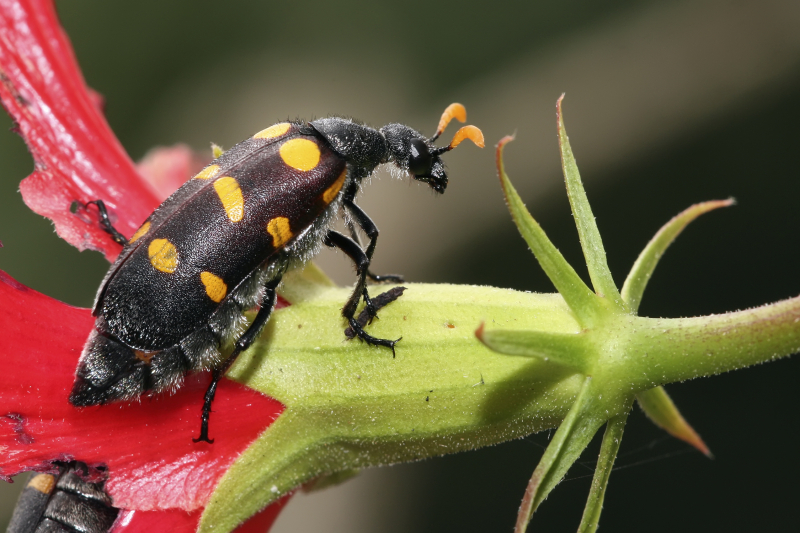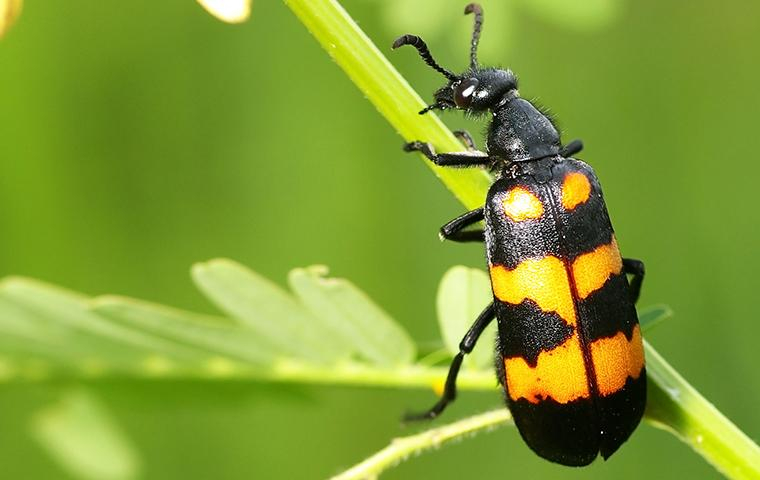Blister Beetle

Blister Beetles are beetles of the family Meloidae, so called for their defensive secretion of a blistering agent, cantharidin. The family is thought to have begun diversifying during the Early Cretaceous. The oldest fossil of the group is a larva (triangulin) found phoretic on a schizopterid bug from the mid-Cretaceous Burmese amber, dated to around 99 million years ago.
The initial larval stage of blister beetles, which undergo hypermetamorphosis, is often a mobile triungulin. The larvae feed on insects, primarily attacking bees but also occasionally eating grasshopper eggs. The meloid larva, though occasionally referred to as parasitoids, generally appears to ingest the immature host along with its food and can frequently survive on the food alone; as a result, it is not an obligatory parasitoid but rather a facultative parasitoid, or just a kleptoparasite. The adults sometimes feed on flowers and leaves of plants of such diverse families as the Amaranthaceae, Asteraceae, Fabaceae, and Solanaceae











